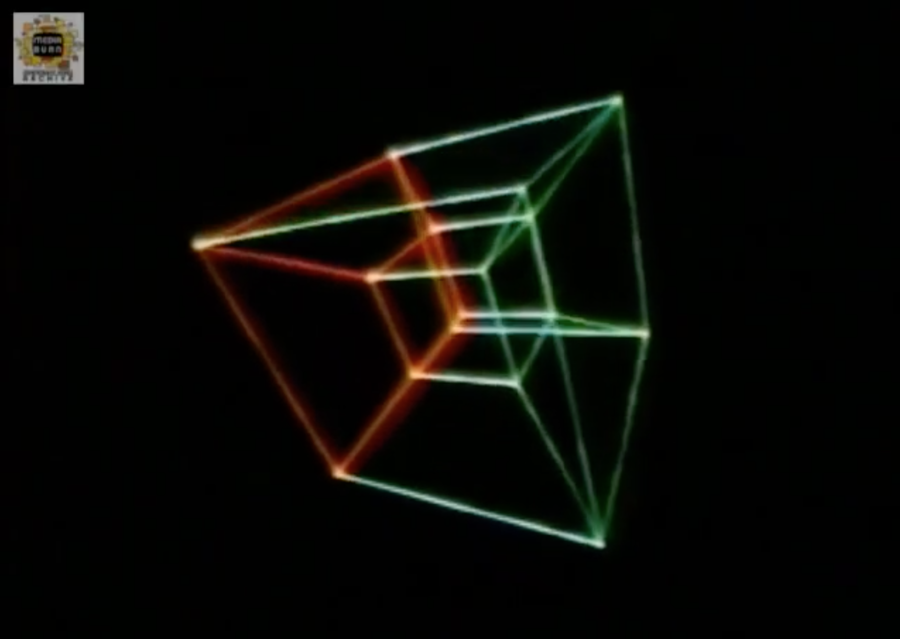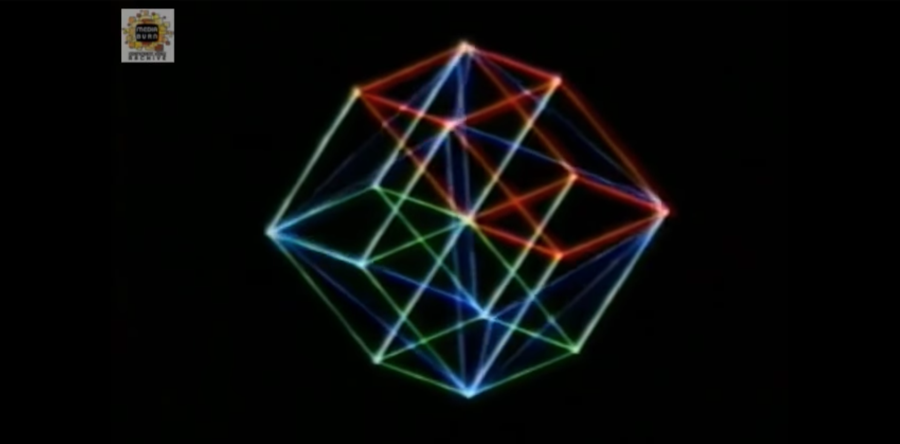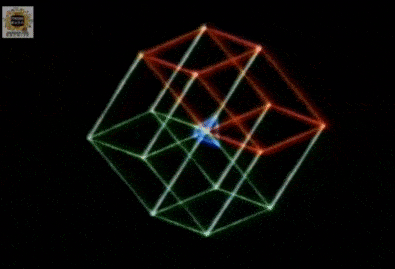In 1978, mathematics professor Thomas Banchoff and computer scientist Charles Strauss teamed up to create an animated visualization of a 3-dimensional cube rotating in four-dimensional space, also known as a hypercube or tesseract. Via Wikipedia:
“The tesseract can be unfolded into eight cubes into 3D space, just as the cube can be unfolded into six squares into 2D space.”
The resulting film, titled The Hypercube: Projections and Slicing, was constructed with the real-time interactive computer graphics of the era, a technological milestone for 4-dimensional geometry.

Beginning at the 1-minute mark, the film observes and annotates a rotating cube in three ways: orthogonal or straight projection, central or perspective projection, and finally with hyperplane slices coming from four different directions. Some background from Fleisch Film:
“There is no fourth dimension in reality. It’s a concept of an artificial space that bears no direct similarity to real space. Try to think of it as geometrical extravaganza. It is constructed with mathematical means by analyzing three-dimensional space and how the three dimensions relate to each other. The extra dimension is added due to the geometrical laws found in the first three…”

“To get an idea of the fourth dimension maybe it would be a good start to begin with a point. A point has zero dimensions. It only exists in itself and has no possibilities to move anywhere. If we put another point at the right side beside the first one and connect them we get a line. A line has one dimension. It is now possible for the zero-dimensional point to travel within the line in a left and right manner.
“Now we move the line perpendicular to itself in a plane and we get a square. A square has two dimensions. The point can now travel left and right as well as up and down. Moving the square perpendicular to itself results in a cube. A cube has three dimensions. The point is happy because it can travel even more. It can now move in three directions: left and right (x-direction), up and down (y-direction) and back and forth (z-direction).”

Allowing the point more freedom, beyond our 3D world, moves it in four directions: left and right (x-direction), up and down (y-direction), back and forth (z-direction), ana and kata (w-direction). That w-axis (in blue) is representative of a direction that’s perpendicular to height, length, and width, and can be best understood in the motion of the film.

The Hypercube: Projections and Slicing was awarded the Prix de la Recherche Fondamentale at the 1978 International Congress of Scientific Films.
Watch more math and geometry videos, including:
• Vi Hart’s Hexaflexagon
• Symmetry, an Eames animated short for the 1961 Mathematica exhibition
• An accidental toy inventor’s shapeshifting designs
• The Catenary and Mathematics All Around Us
• The Kresling-Pattern and our origami world
Curated, kid-friendly, independently-published. Support this mission by becoming a sustaining member today.

